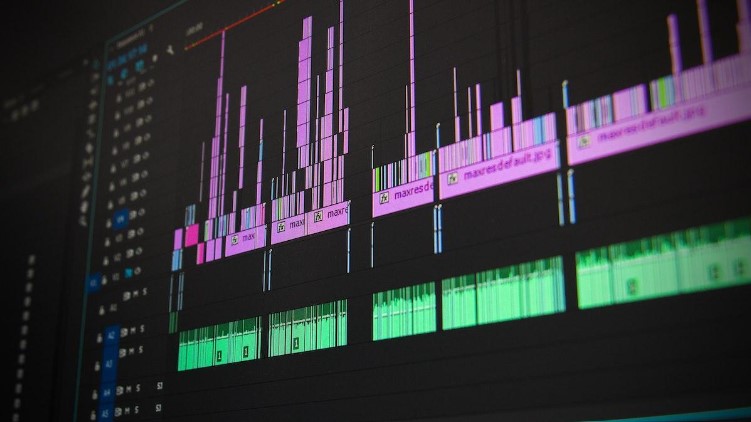Introduction
In the dynamic world of music production, the art of mixing stands as a pillar of creativity and technical excellence. The harmonious blending of audio elements and the creation of spatial depth are skills that define the work of a professional mixer. This blog delves deep into the intricacies of mixing, focusing on audio balance, spatial enhancement, and the profound impact of music production courses on mastering these techniques.
The Crucial Role of Mixing in Music Production
Mixing isn’t just a step in the music production process; it’s the transformative stage where individual tracks come together to craft a sonic masterpiece. A meticulously mixed track can elevate a composition from a mere arrangement of sounds to an emotive journey that captivates the listener’s senses.
Understanding Audio Balance: Where Every Element Counts
Achieving the perfect audio balance is akin to orchestrating a symphony. Every instrument, vocal, and sound effect occupies a distinct space within the mix. The interplay between volume levels, frequency ranges, and tonal characteristics determines the clarity and impact of each element.
Achieving Dimension and Depth: The Importance of Creating Space
Creating a sense of space within a mix adds a layer of dimension that separates amateur mixes from professional ones. Strategic placement of instruments in the stereo field brings depth and realism, transforming a two-dimensional track into a three-dimensional auditory experience that envelops the listener.
Music Production Courses: Learning the Techniques of Professional Mixing
Embracing the nuances of professional mixing often begins with enrolling in music production courses. These courses offer comprehensive insights into mixing techniques, from basic principles to advanced concepts. Learning from experienced mentors who have navigated the intricacies of mixing accelerates your journey toward creating polished and impactful mixes.
Mastering the Tools: Equalization and Panning
The foundation of any well-mixed track lies in understanding the tools of the trade. Equalization (EQ) allows for precise shaping of each element’s frequency content, ensuring they complement rather than compete. Panning, on the other hand, places sounds within the stereo spectrum, creating spatial separation and enhancing clarity.
Dynamic Control: The Magic of Compression and Limiting
Compression and limiting are the secret weapons of a skilled mixer. Compression evens out volume fluctuations, enhancing the cohesion of the mix. Limiting ensures that the loudest peaks remain controlled, preventing distortion. These dynamic processors play a crucial role in achieving a balanced and polished sound.
Enhancing Space with Reverb and Delay
The judicious use of reverb and delay is where the magic of spatial enhancement truly unfolds. Reverb simulates the acoustic characteristics of various environments, while delay introduces echoes that contribute to the perception of depth. By skillfully applying these effects, you can transport listeners to virtual acoustic landscapes.
How to Learn Music Production: Navigating the Path to Expertise
Learning music production is a holistic journey that encompasses technical skills and artistic sensibilities. Understanding signal flow, microphone techniques, and digital audio workstations are fundamental. To understand how to learn music production effectively, one must tap into a combination of structured courses, hands-on practice, and continuous exploration.
The Art of Subtle Adjustments and Precise Listening
Mastery in mixing lies in the subtlety of adjustments. Minute changes in volume, panning, and processing can profoundly impact the final result. Equally important is developing the ability to listen with discernment, training your ears to identify nuances and areas that require improvement.
Finding Your Signature Sound: A Blend of Skill and Creativity
As you progress in your mixing journey, a distinctive style—your signature sound—naturally emerges. Mixing is a fusion of technical prowess and artistic expression. Developing a personal style involves striking a delicate balance between honing your craft and embracing your unique creative instincts.
Exploring Advanced Techniques: Automation and Binaural Mixing
Advancing your mixing skills involves exploring advanced techniques. Automation allows you to bring dynamics to life, evolving volume, pan, and other parameters over time. Binaural mixing takes spatial enhancement to new heights, providing listeners with an immersive, three-dimensional experience when using headphones.
Building Your Mixing Studio: Creating an Ideal Sonic Environment
Creating an ideal sonic environment is vital for precise mixing. Factors like room acoustics, speaker placement, and acoustic treatment significantly influence the accuracy of your mixes. Building a dedicated mixing studio ensures a controlled environment where you can make accurate judgments.
Unleashing Creativity: Breaking the Rules to Create Unique Mixes
While mastering the technical aspects is crucial, embracing creative experimentation is equally essential. Breaking conventions and thinking outside the box can yield innovative results. By daring to challenge norms, you open the door to discovering new techniques that set your mixes apart.
The Art of Collaboration: Working with Artists and Producers
Collaboration is at the heart of music production. Working with artists, producers, and other creatives demands effective communication and a willingness to understand and execute their vision. Skillful collaboration ensures that every sonic element contributes cohesively to the final product.
Conclusion
Mastery in mixing is a continuous pursuit, driven by passion, practice, and a thirst for knowledge. The art of achieving audio balance and creating space requires both technical finesse and a keen artistic ear. With the guidance of music production courses, you can accelerate your learning curve and equip yourself with the skills to transform raw tracks into captivating sonic journeys that resonate deeply with audiences.

